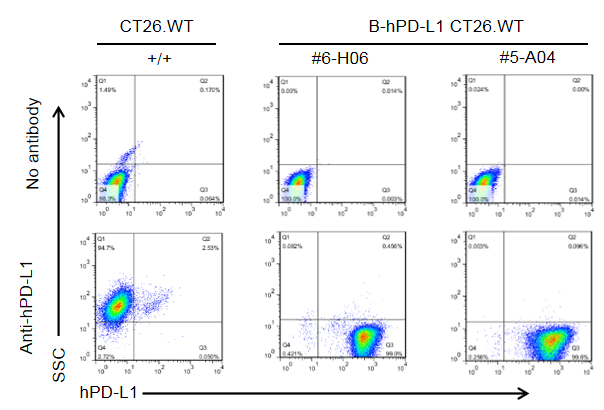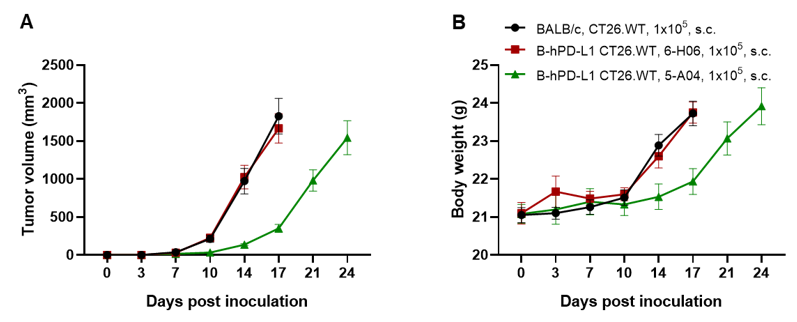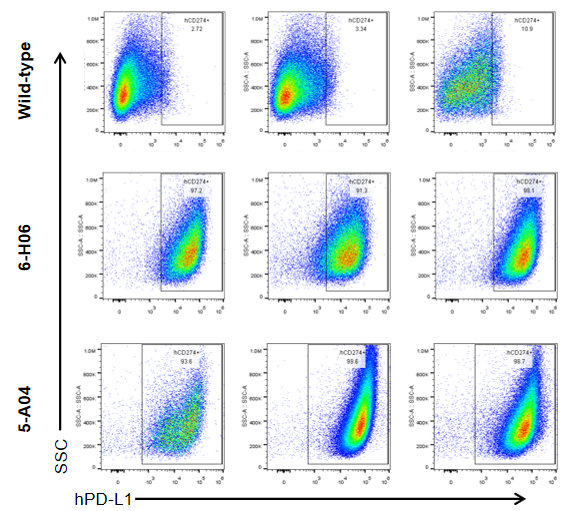B-hPD-L1 CT26.WT
|
Common name |
B-hPD-L1 CT26.WT | Catalog number | 322204 |
| Aliases |
B7-H, B7H1, PD-L1, PDCD1L1, PDCD1LG1, PDL1, hPD-L1 |
Disease | Colon carcinoma |
|
Organism |
Mouse |
Strain | BALB/c |
| Tissue types | Colon | Tissue | Colon |
Gene targeting strategy for B-hPD-L1 CT26.WT cells. The exogenous promoter and human PD-L1 coding sequence was inserted into murine exon 3. The insertion disrupts the endogenous murine PD-L1 gene, resulting in a non-functional transcript.

PD-L1 expression analysis in B-hPD-L1 CT26.WT cells by flow cytometry. Single cell suspensions from wild-type CT26.WT and B-hPD-L1 CT26.WT cultures were stained with species-specific anti-PD-L1 antibody. Human PD-L1 was detectable on the surface of B-hPD-L1 CT26.WT cells but not on wild-type CT26.WT cells (+/+). The 6-H06 and 5-A04 clone of B-hPD-L1 CT26.WT cells were used for in vivo experiments.

Subcutaneous homograft tumor growth of B-hPD-L1 CT26.WT cells. B-hPD-L1 CT26.WT cells (1x105) and wild-type CT26.WT cells (1x105) were subcutaneously implanted into BALB/c mice (female, 10-week-old, n=6/8). Tumor volume and body weight were measured twice a week. (A) Average tumor volume ± SEM. (B) Body weight (Mean± SEM). Volume was expressed in mm3 using the formula: V=0.5 X long diameter X short diameter2. As shown in panel A, B-hPD-L1 CT26.WT cells were able to establish tumors in vivo and can be used for efficacy studies.

B-hPD-L1 CT26.WT cells were subcutaneously transplanted into BALB/c mice (n=8/6). At the end of the experiment, tumor cells were harvested and assessed for human PD-L1 expression by flow cytometry. As shown, human PD-L1 was highly expressed on the surface of tumor cells. Therefore, B-hPD-L1 CT26.WT cells can be used for in vivo efficacy studies of novel PD-L1 therapeutics.











